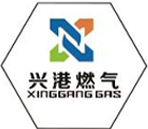
Dec . 24, 2024 23:51
Back to list
gas pressure regulator valve
Understanding Gas Pressure Regulator Valves An Essential Component for Gas Systems
In various industries, especially those involving gas distribution and usage, the importance of a gas pressure regulator valve cannot be overstated. These valves play a crucial role in ensuring the safe and efficient operation of gas equipment by maintaining optimal pressure levels. Understanding how these regulators work, their types, applications, and maintenance needs can be invaluable for anyone involved in gas handling processes.
What is a Gas Pressure Regulator Valve?
A gas pressure regulator valve is a device used to control and stabilize the pressure of gases within a system. By reducing the high pressure of gas from a supply line to a lower, usable level, these regulators ensure a continuous and safe flow of gas for various applications, including residential heating, industrial processes, and medical facilities. They function by balancing the pressure difference between the inlet and outlet of the system, utilizing a diaphragm or a mechanical spring to adjust the flow of gas as needed.
Types of Gas Pressure Regulators
Gas pressure regulators come in several types, each designed for specific applications
1. Single-Stage Regulators These are typically used in applications where the gas pressure fluctuates minimally. They reduce the high input pressure to a set lower output pressure in a single step.
2. Two-Stage Regulators These are ideal for situations with fluctuating input pressure. The first stage reduces the pressure to an intermediate level, and the second stage brings it down to the final delivery pressure, providing greater stability.
3. Electronic Regulators Advanced gas systems may incorporate electronic regulators that use sensors and control systems to maintain pressure automatically. These regulators are especially beneficial in processes requiring precision and consistency.
gas pressure regulator valve

4. Back Pressure Regulators These are used in applications where it's essential to maintain a specific setpoint regardless of flow changes downstream. They help prevent excessive pressure buildup in the system.
Applications of Gas Pressure Regulators
Gas pressure regulators are employed in a wide array of industries. In residential settings, they are crucial in natural gas lines, ensuring appliances receive the correct pressure for safe operation. In the medical field, regulators are used to control gas supplies for anesthesia and respiratory equipment, where precision is paramount.
Industrial applications range from manufacturing processes requiring controlled gas atmospheres to power generation, where maintaining the correct pressure is vital for operational efficiency. Additionally, they are used in laboratories for experiments that require specific gas environments and pressures.
Maintenance of Gas Pressure Regulators
To ensure reliability and safety, regular maintenance of gas pressure regulators is essential. Users should regularly inspect for signs of wear, leaks, or corrosion, as these imperfections can lead to hazardous situations. Additionally, calibration should be performed periodically to ensure that the regulator is accurately controlling the gas pressure within the desired range.
Proper installation is also critical. Regulators should be installed in accordance with the manufacturer’s guidelines, and appropriate piping should be used to avoid undue stress on the regulator itself. Furthermore, it is advisable to involve qualified personnel in installation and maintenance procedures to ensure compliance with safety regulations.
Conclusion
Gas pressure regulator valves are vital components in any gas handling system, providing safety, efficiency, and reliability. By understanding their function, types, and maintenance requirements, users can ensure that their gas systems operate smoothly and safely. As technology progresses, the design and functionality of these regulators are expected to evolve, offering even more efficiency and safety in gas management processes. Whether in a residential setting or an industrial environment, the proper use of gas pressure regulators is essential for optimal performance and safety.
Latest news
-
Safety Valve Spring-Loaded Design Overpressure ProtectionNewsJul.25,2025
-
Precision Voltage Regulator AC5 Accuracy Grade PerformanceNewsJul.25,2025
-
Natural Gas Pressure Regulating Skid Industrial Pipeline ApplicationsNewsJul.25,2025
-
Natural Gas Filter Stainless Steel Mesh Element DesignNewsJul.25,2025
-
Gas Pressure Regulator Valve Direct-Acting Spring-Loaded DesignNewsJul.25,2025
-
Decompression Equipment Multi-Stage Heat Exchange System DesignNewsJul.25,2025

